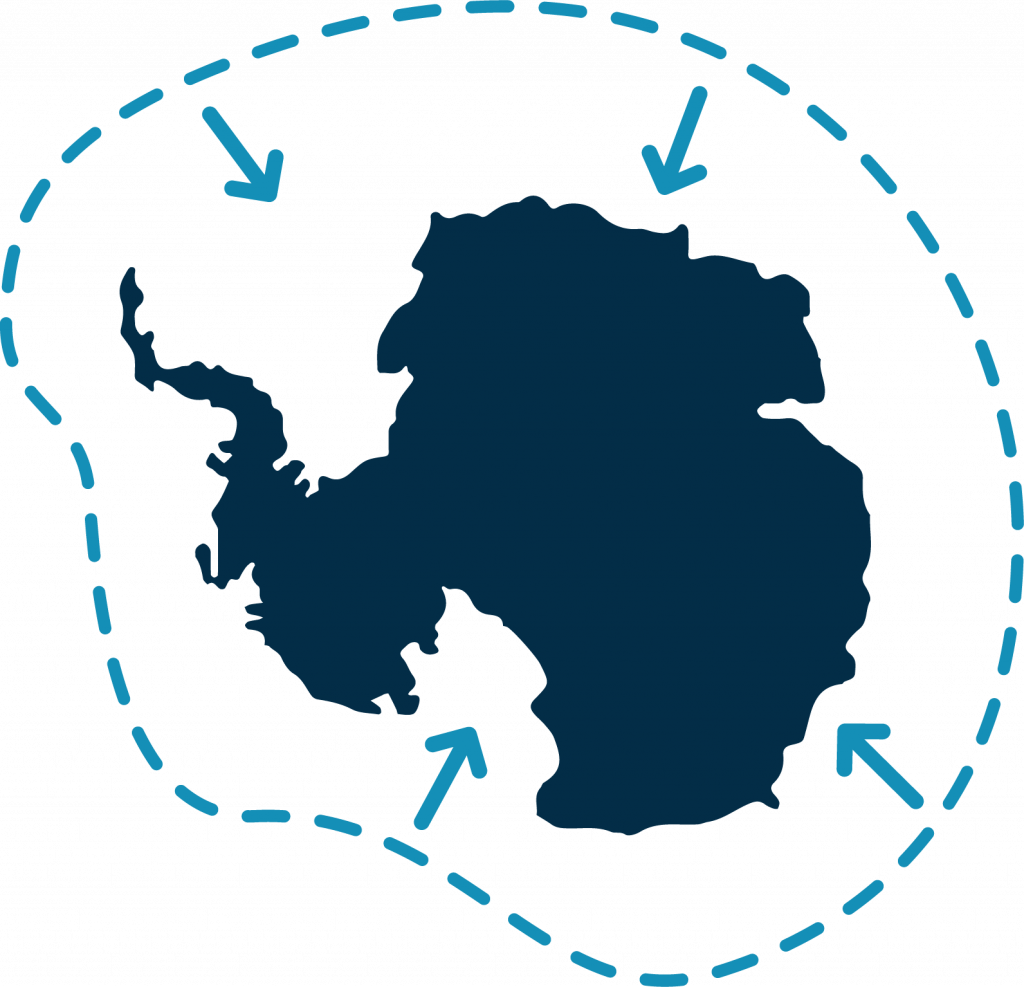 State-of-the-art ocean/sea-ice/climate (coupled) models have consistently underestimated the recent reduction in Antarctic sea-ice. Information on sea-ice thickness and snow depth-on-sea-ice are required to explore this mismatch and improve the model physics of both thermodynamic and dynamic processes.
State-of-the-art ocean/sea-ice/climate (coupled) models have consistently underestimated the recent reduction in Antarctic sea-ice. Information on sea-ice thickness and snow depth-on-sea-ice are required to explore this mismatch and improve the model physics of both thermodynamic and dynamic processes.
Sea-ice thickness provides an integrated measure of changes in the global energy budget. Snow on sea-ice adds an insulating layer and, in Antarctica, contributes to sea-ice volume via snow-ice formation. Whilst not readily observed, information about both sea-ice thickness and snow on sea-ice thickness are critical for forecasting and navigation.
Accurate estimates of snow on sea-ice are crucial to improve satellite-derived estimates of sea-ice thickness and estimate energy fluxes for Numerical Weather Prediction. At present, climatologies are used to estimate snow on sea-ice when retrieving sea-ice thickness from altimetry, which is a sub-optimal approach when computing long-term trends: Uncertainty associated with spatio-temporal distribution of snow depth is the largest individual source of error in altimetry-based sea-ice thickness retrievals. In conjunction with snow properties, knowledge of underlying sea-water and sea-ice properties are needed to translate any RADAR or LIDAR surface elevation into sea-ice thickness. In summary, the greatest potential sources of uncertainty in calculations of Antarctic sea-ice thickness and thus volume are:
- Snow thickness and density.
- Their temporal and regional evolution.
- The densities of sea-ice and sea-water.
 Freeboard (height above sea-level)-to-ice-thickness retrievals have been proposed and used successfully for Arctic conditions. However, they do not work (well) for Antarctic sea-ice due to it’s highly dynamic and seasonal nature, hence low sea-ice thickness. The comparatively thick and highly variable snow cover over Antarctic sea-ice, associated with processes such as flooding at the ice-snow interface and rapid weather-induced snow metamorphism hamper the retrieval of sea-ice thickness from observed freeboard data. The influence of these factors on physical snow and sea-ice properties relevant for satellite remote sensing of sea-ice thickness has thus far inhibited accurate routine estimates of sea-ice thickness distribution in the Southern Ocean.
Freeboard (height above sea-level)-to-ice-thickness retrievals have been proposed and used successfully for Arctic conditions. However, they do not work (well) for Antarctic sea-ice due to it’s highly dynamic and seasonal nature, hence low sea-ice thickness. The comparatively thick and highly variable snow cover over Antarctic sea-ice, associated with processes such as flooding at the ice-snow interface and rapid weather-induced snow metamorphism hamper the retrieval of sea-ice thickness from observed freeboard data. The influence of these factors on physical snow and sea-ice properties relevant for satellite remote sensing of sea-ice thickness has thus far inhibited accurate routine estimates of sea-ice thickness distribution in the Southern Ocean.
The primary objective of this ISSI team is to identify and proto-type a processing chain to derive Antarctic sea-ice thickness from a range of remotely-sensed observations to understand its spatial-temporal characteristics in response to change and variability in external forcing. While the areal extent of sea-ice is routinely monitored by satellite passive-microwave sensors, deriving sea-ice (or snow) thickness from remote observations presents a matter of urgency in informing sea-ice and climate research.

